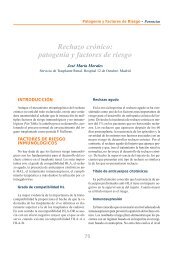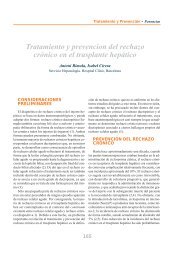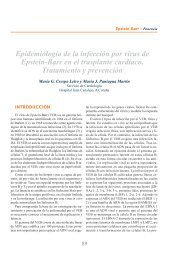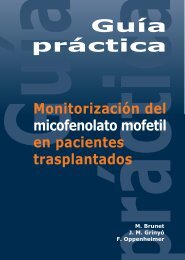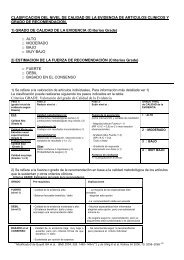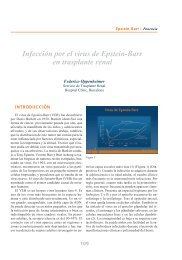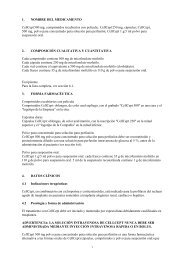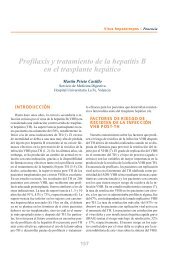Untitled - Roche Trasplantes
Untitled - Roche Trasplantes
Untitled - Roche Trasplantes
Create successful ePaper yourself
Turn your PDF publications into a flip-book with our unique Google optimized e-Paper software.
PROTOCOL BIOPSIES AND THE DIAGNOSIS OF HUMORAL REJECTION<br />
Figure 4. Chronic transplant glomerulopathy with thickening and duplication<br />
of peripheral basement membranes. In capillary loops still inflammatory<br />
cells can be appreciated as a sign of ongoing immunological damage<br />
to the endothelial cells.<br />
Yet (2006), specific pathological features of chronic humoral rejection are not officially<br />
part of the current up-dated Banff classification system. However, at the two recent<br />
Banff meetings in 2003 and 2005 an open-forum consensus-discussion was proceeded<br />
to confirm the entity of chronic humoral rejection and to define diagnostic criteria.<br />
In was agreed that this entity exists and that it should be part of the classification in<br />
the future. Based on several publications, beside non-specific features of chronic allograft<br />
damage like tubular atrophy and interstitial fibrosis, the following pathological features<br />
appear to be specific diagnostic hallmarks of chronic antibody-mediated allograft<br />
damage:<br />
• Duplication of glomerular basement membrane, i.e., chronic allograft glomerulopathy<br />
(Figure 4, Figure 5).<br />
• Intimal myofibroblastic and foam cell proliferation in allograft arteries (Figure 6) with infiltration<br />
of mononuclear cells and few T-lymphocytes (Figure 7), i.e., chronic allograft<br />
vasculopathy.<br />
57




